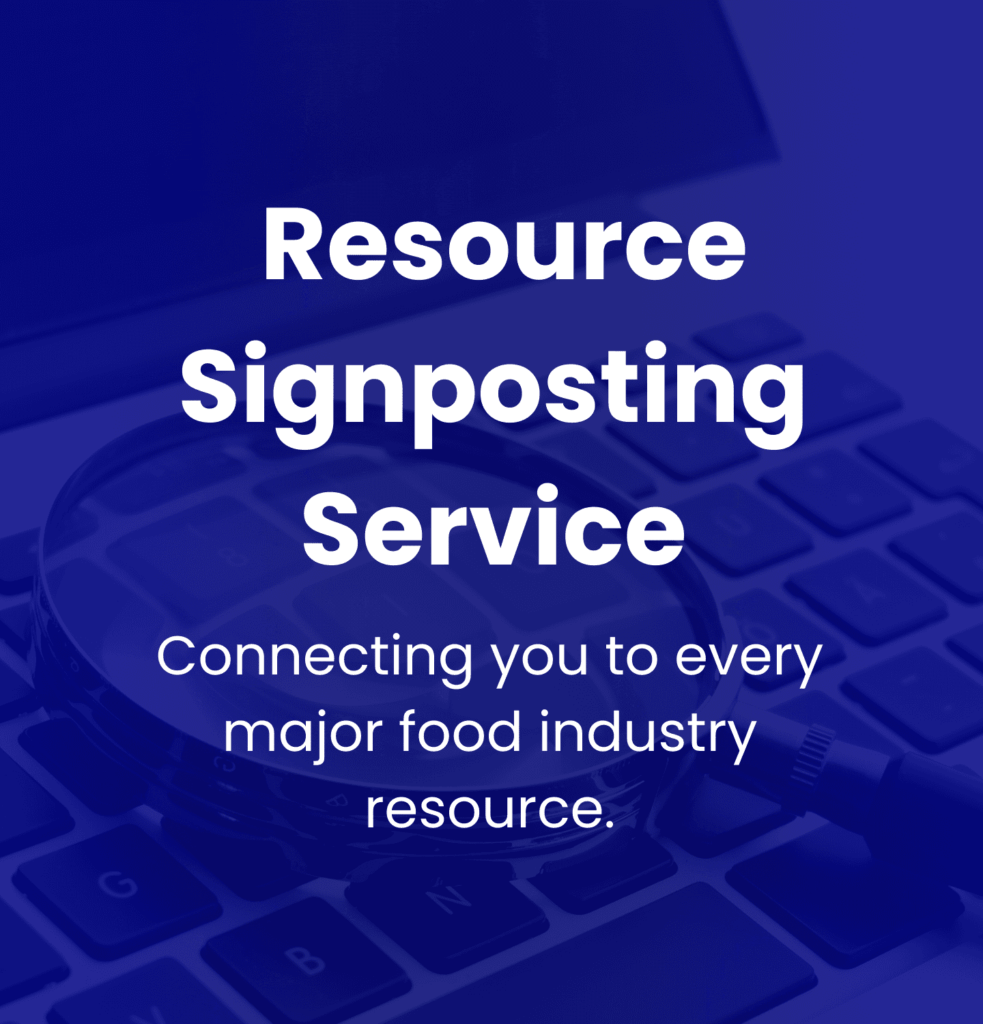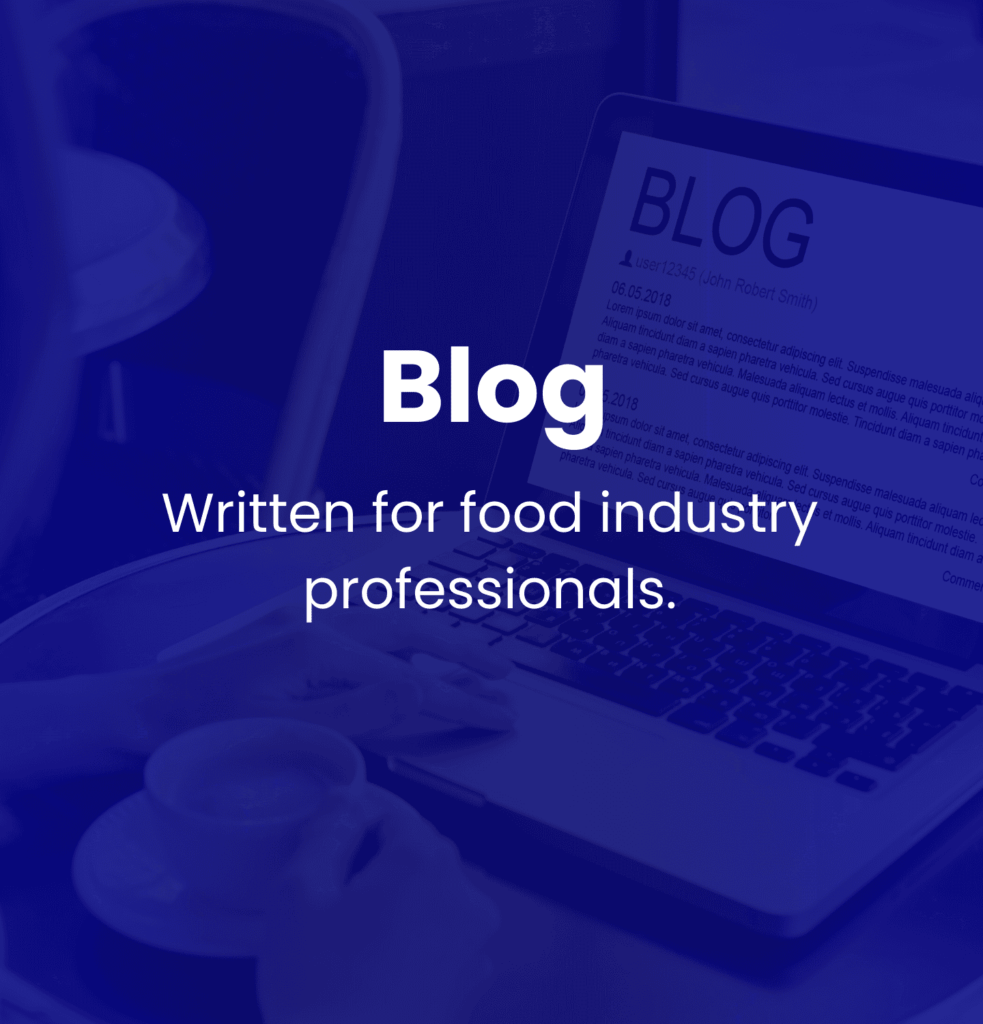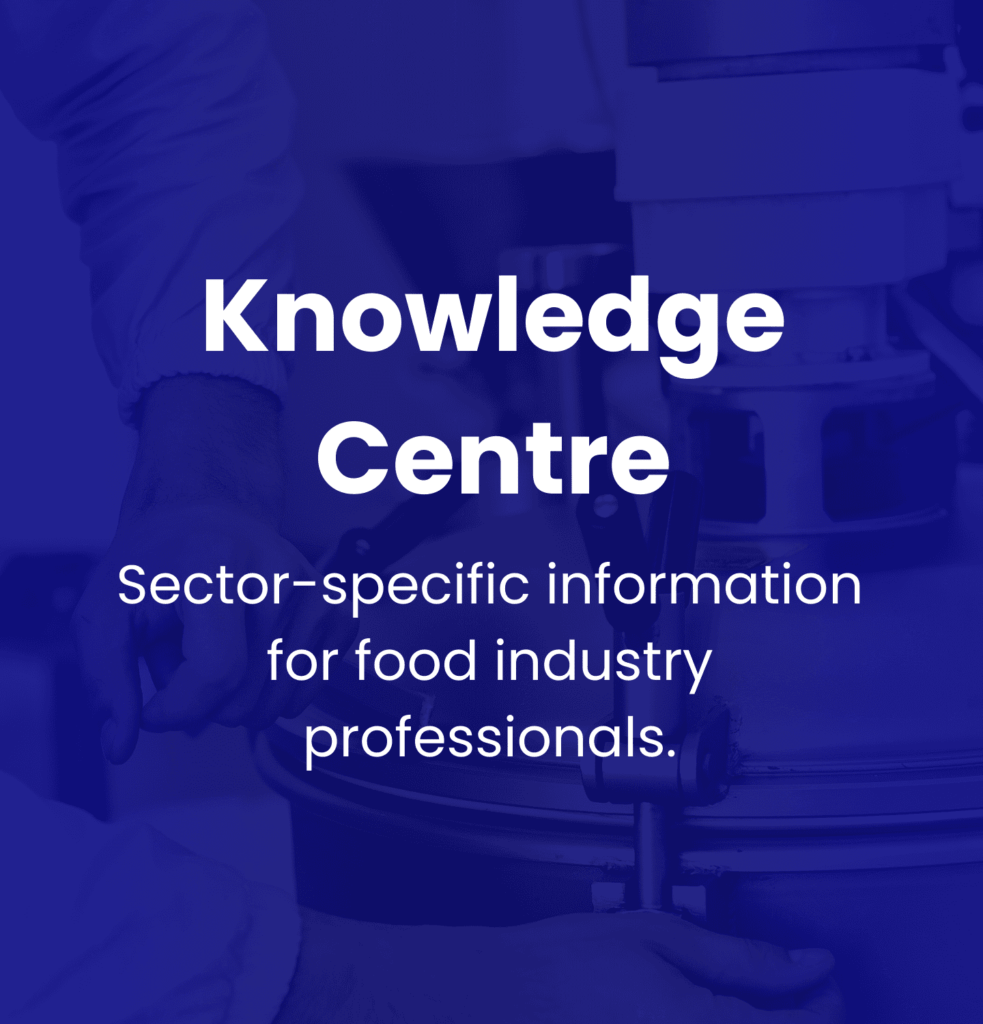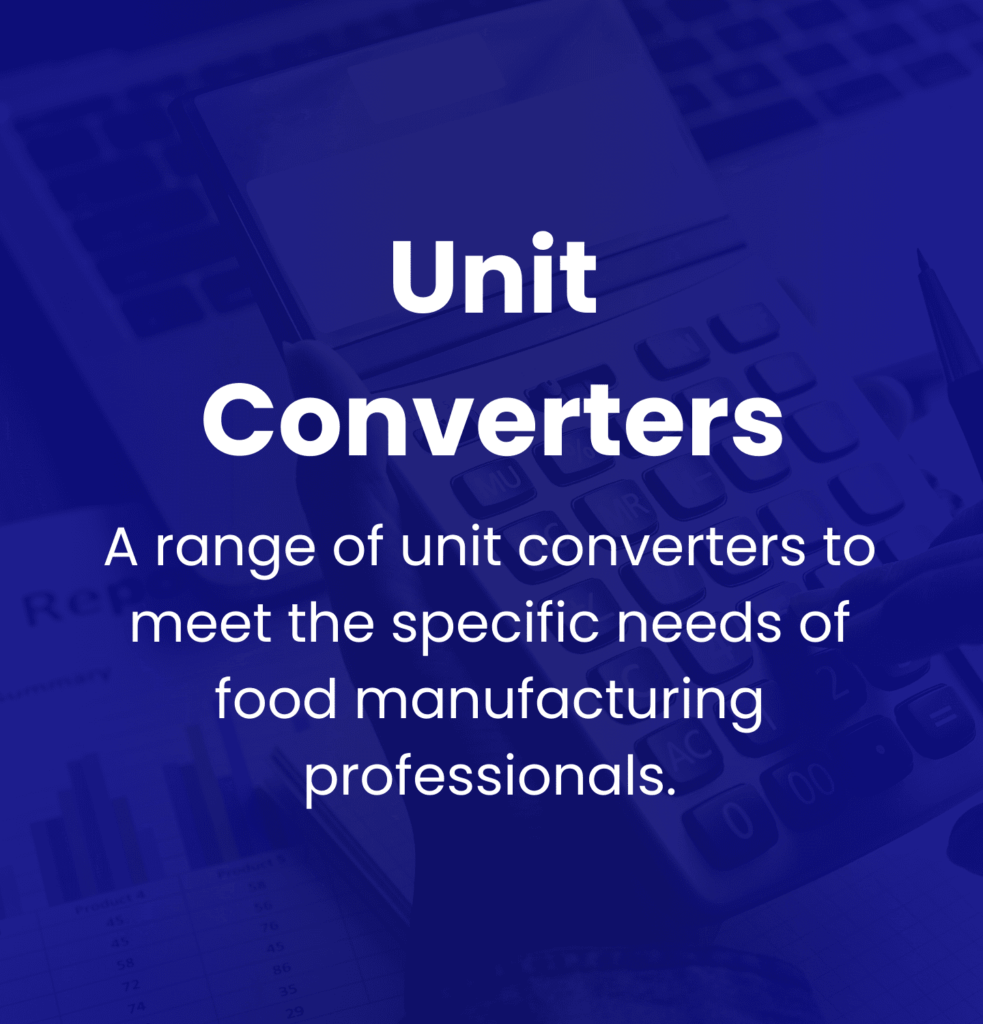Know: Capacity Planning
Contents
Introduction
Key Takeaways
Understanding Capacity Planning: Purpose and Importance
Effective Capacity Planning Strategies and Their Impact on Food Manufacturing
Exploring Types of Capacity Planning in Food Manufacturing
Implementation Framework for Successful Capacity Planning
Overcoming Industry-Specific Challenges in Capacity Planning
Importance of Cross-Functional Collaboration in Capacity Planning
Data-Driven Optimisation For Capacity Planning
Sustainability-focused Capacity Planning
Capacity Planning in a Global Context
Conclusion
Introduction
Capacity planning serves as a key element in the food manufacturing industry, forming a link between production capabilities and market demands. Its importance is substantial, as it enables manufacturers to efficiently meet customer needs while optimising operational costs. Sound capacity planning helps avoid complications such as stock-outs, excess inventory, and production delays, which may affect profitability and client satisfaction.
A fundamental aspect of capacity planning involves determining the production capacity needed to cater to fluctuating product demands. This entails analysing historical trends, forecasting future requirements, and evaluating current production resources. Aligning production abilities with expected market demands means businesses have the ability to strategically manage resources, circumvent overproduction or shortages, and streamline their operations—an all-encompassing approach to resource management that is central to maintaining competitiveness within the food manufacturing sector.
Effective capacity planning reaches beyond production logistics alone. It influences several aspects of organisational strategy including resource optimisation, improved customer satisfaction through prompt deliveries, and enhanced supply chain management. This planning process aligns closely with lean principles, minimising waste while boosting responsiveness to market variations. It also supports initiatives linked to Industry 4.0 technologies, allowing for real-time data use and process enhancements.
In our deeper look at this subject, we will cover several main themes related to capacity planning. These consist of effective strategies for capacity planning, different kinds of planning methodologies, implementation frameworks to improve operational efficiency, industry-specific challenges that food manufacturing faces, and the importance of cross-functional collaboration within firms. Each of these themes plays a key role in shaping how food manufacturers can successfully manage the complexities of capacity planning.
Key Takeaways
In the food manufacturing industry, capacity planning functions as a crucial cog in the wheel of operational success. The process involves the strategic alignment of resources in line with shifting demands, proving imperative in minimising stock shortages and maintaining customer satisfaction. The ability to forecast future requirements accurately enables organisations to modify their production capabilities. This adjustment boosts resource allocation while increasing overall efficiency.
Real-time Monitoring: A Significant Aspect of Operational Effectiveness
Real-time monitoring is another essential aspect that greatly influences operational effectiveness. This feature allows businesses to compare their performance against the current production needs, equipping them to address any inefficiencies promptly and adapt to altering market conditions. The data derived from such assessments are vital for maintaining a competitive edge. They provide decision-makers with current information, empowering them to make dynamic adjustments in their capacity and resource allocation.
Navigating Unique Challenges in the Food Manufacturing Sector
Unique challenges associated with the fluctuating consumer demand and the perishable nature of products mark the food manufacturing sector. Consumer preferences and seasonal demand often vary, necessitating flexible capacity planning strategies. Additionally, the perishable quality of food items requires precise inventory management to avoid wastage resulting from unsold goods. These complexities underscore the importance of employing advanced analytics and scenario planning techniques to successfully navigate this industry segment.
Capacity planning in food manufacturing is all about coupling strategic foresight with operational agility. This approach empowers businesses to proactively respond to changing market demands while mitigating the risks linked to stockouts and wastage. Not only does it pave the way for sustainable growth, but it also meets the expectations of today’s discerning customers.
Food Industry Hub Management Systems can significantly boost the effectiveness of your food safety and quality management system, leading to improved confidence and elevated quality assurance throughout your operations.
Understanding Capacity Planning: Purpose and Importance
Capacity planning is a strategic process vital to the success of food manufacturing companies. It is the act of determining the resources needed to efficiently satisfy both present and anticipated demand, which in turn enhances the effective use of assets such as manpower, machinery, and raw materials.
Purpose of Capacity Planning
Capacity planning is of significant importance within the food manufacturing industry. Principally, it optimises resource assignment. It guarantees the precise quantity of resources — such as labour, machinery, and ingredients — is available to meet customer demand without generating waste or underutilisation. By appraising production capabilities against anticipated demand levels, companies can amplify operational efficiency and increase productivity, thus reducing costs.
Capacity planning plays a key role in preserving the financial health of an organisation. By effectively managing operational expenses and minimising waste, companies can retain financial stability. This stability empowers companies to invest in sustainable growth whilst preserving the quality of goods and services supplied to customers.
The Symbiotic Relationship Between Demand Forecasting and Capacity Planning
Precise demand forecasting forms the bedrock of effective capacity planning. With exact forecasting, companies can predict changes in demand, allowing them to adapt their production schedules and resource assignment respectively. This adjustment is pivotal for maintaining operational efficiency and ensuring timely deliveries to clients [Source: 6Sigma].
Integrating accurate demand predictions into capacity planning strategies enables food manufacturers to lessen the risk of stock-outs, thereby improving customer satisfaction. In addition, this proactive approach helps avert overcapacity, which can result in unnecessary expenditure linked with unused resources.
Capacity Planning as a Cost Control Mechanism
Capacity planning acts as a vital cost control mechanism within the food manufacturing process. It identifies inefficacies and underutilised resources, allowing companies to introduce strategies to optimise processes, minimise waste, and enhance overall production costs. This efficiency leads to higher profitability as operational costs are controlled.
Effective capacity planning guides companies to pragmatically manage resources, enabling informed decision-making related to staffing levels, production scheduling, and stock control. By optimising these elements, food manufacturers support sustainable growth whilst ensuring they meet market demands effectively. This strategic management ultimately bolsters both their financial health and operative success within the competitive landscape of food manufacturing.
Effective Capacity Planning Strategies and Their Impact on Food Manufacturing
Capacity planning holds significant value in the food manufacturing industry, striking a careful balance between production capabilities and market demand. The implementation of efficient capacity planning optimises resource utilisation, mitigates waste, and aids in meeting consumer expectations. The most prominent strategies in use include Lead, Lag, and Match, each with its distinctive advantages and drawbacks.
Lead Strategy
Using a lead strategy involves building capacity ahead of a projected increase in demand. This forward-thinking approach enables manufacturers to secure market share by maintaining product availability, particularly essential during peak seasons. The strategy proves beneficial in reducing stockouts, thereby improving operational efficiency and customer satisfaction. However, the strategy also presents the risk of overcapacity should demand fall short of the predicted levels, which can result in escalated costs and resource wastage.
Lag Strategy
The lag strategy, on the other hand, emphasises adding capacity only after a surge in demand has occurred. This reactionary method minimises overhead costs as it avoids premature investments in capacity expansion. Nonetheless, it can lead to shortages during sudden demand increases, resulting in lost sales and customer dissatisfaction. While a lag strategy may help minimise financial risks, it’s essential for food manufacturers to closely monitor demand patterns to evade damaging consequences arising from undercapacity.
Match Strategy
The match strategy seeks a balanced path by making incremental adjustments to capacity in reaction to changes in demand. This strategy is designed to ensure efficient resource use while sidestepping the dangers that lead and lag strategies pose. Effective implementation of a match strategy requires manufacturers to have accurate demand forecasting capabilities, relying on real-time data analysis to make informed capacity adjustments.
Hurdle Rates in Strategic Capacity Investments
Employing hurdle rates is key in assessing whether proposed investments in capacity expansion will achieve the necessary financial returns. A hurdle rate is the minimum projected return on investment (ROI) that a project needs to reach to be deemed viable. In food manufacturing, using a hurdle rate ensures that potential capacity investments are in line with broader financial objectives, such as profitability and long-term sustainability. With hurdle rates, businesses can discern which capacity expansions are beneficial and which might give rise to unwarranted expenditures that don’t correspond with the associated risks.
Connection Between Demand Forecasting Accuracy, Risk Tolerance, and Strategic Choices
Defining the connection between demand forecasting accuracy and risk tolerance is essential for strategic capacity planning. Precise demand forecasting significantly informs capacity planning decisions, shaping the strategic choices a company has regarding their capacity strategies. Inaccurate forecasts may lead to over- or under-capacity scenarios, having a negative impact on financial performance and customer satisfaction.
The level of risk a company is willing to accept greatly influences the choice of capacity planning strategy. Organisations with a higher risk tolerance might favour a lead strategy to capitalise on anticipated demand growth, while those with a lower risk tolerance may prefer a lag strategy to mitigate potential investments.
Effective capacity planning in the food manufacturing industry necessitates a thoughtful alignment of demand forecasting accuracy, risk tolerance, and strategic capacity decisions. This approach, bolstered by solid investment evaluation through hurdle rates, culminates in better decision-making processes and heightens overall operational efficiency.
Sign-up for the Food Industry Hub Mail Service
We regularly produce new content for food industry professionals, and the Food Industry Hub Mail Service is the best way to stay up to date with the latest additions.
Signup today to be added to the Food Industry Hub mailing list.
Exploring Types of Capacity Planning in Food Manufacturing
Capacity planning plays a significant strategic role in the food manufacturing industry, serving as a balancing act between production capabilities and market demand while maximising resource usage. This integral process comprises various methodologies, including product capacity, workforce capacity, and tool capacity planning. Gaining an insight into these strategies and comprehending their interconnectedness is key to making operations smoother and enhancing overall efficiency.
Product Capacity Planning
The primary consideration of product capacity planning revolves around ensuring an adequate supply of raw materials and finished products to satisfy customer demand. Maintaining this balance is fundamental for retaining optimal inventory levels and preventing stock deficits. The concurrent analysis of raw material requirements and production capacity equips manufacturers with the ability to respond effectively to demand forecasts.
Workforce Capacity Planning
Workforce capacity planning pertains to the assurance of deploying ample manpower endowed with necessary skills to accomplish production tasks competently. Such approach contributes to optimising productivity and inhibits employee burnout by maintaining balanced workloads. Particularly in food manufacturing, where labour costs and productivity intersect significantly, achieving this equilibrium is of significant importance.
Tool Capacity Planning
Tool capacity planning focuses on the efficient management and usage of machinery and equipment in the production process. Ensuring smooth operations without occurrences of bottlenecks or excessive downtime is of utmost concern in this aspect. Adoption of predictive maintenance strategies can optimise equipment usage while curtailing maintenance expenses, thereby boosting overall productivity.
Pertinent Terminology in Capacity Planning
Key terms in capacity planning include bottlenecks and shelf-life management. Bottlenecks denote specific points of production where limited resource capacity can lead to delays or decreased efficiency. Identifying these points is vital for optimal resource allocation and maintaining adherence to production schedules.
Shelf-life management is particularly relevant in the food industry due to the perishable nature of products. Effective shelf-life management makes sure that food products are manufactured and distributed within their sell-by dates, thus reducing waste and enhancing customer satisfaction.
The Interplay of Various Capacity Planning Strategies
The interplay between product, workforce, and tool capacity planning strategies is considerable. For instance, the efficacy of workforce capacity indirectly influences tool capacity, with well-trained staff able to operate machinery more competently. Adopting a holistic capacity planning approach empowers food manufacturers to align all resources aptly to meet demand while avoiding issues related to overcapacity and undercapacity. Such comprehensive planning can enhance operational efficiency, reduce costs, and improve customer satisfaction through timely delivery of quality products.
Implementation Framework for Successful Capacity Planning
In the food manufacturing industry, effective capacity planning is essential for efficiently satisfying customer demand, minimising waste, and enhancing profitability. This framework underscores the significance of leveraging data-driven analysis, real-time monitoring systems, key performance indicators (KPIs), and integration with ERP and MRP systems.
Role of Data-Driven Baseline Analysis
Using historical data on production rates, downtime metrics, and seasonal demand patterns forms the foundation of setting realistic capacity planning benchmarks. Analysing past production trends equips manufacturers with insights into their operational efficiency. For instance, evaluating previous production rates helps firms to understand potential output in the best conditions and to identify areas for efficiency enhancement. Monitoring downtime aids in identifying areas that require improvements to reduce equipment failures that might disrupt production schedules. Besides, understanding seasonal demand patterns allows companies to proactively adjust their production capacity, thus they can meet market demands during peak periods and refrain from overproduction during off-peak periods. This approach towards capacity planning grounded in historical data helps organisations to set achievable targets, thereby averting both under- and overcapacity scenarios.
Importance of Real-Time Monitoring Systems
Real-time monitoring systems are essential to sustain operational efficiency and to derive valuable insights. These systems enable manufacturers to continuously track production processes and swiftly respond to operational deviations. By having access to real-time data, firms can promptly identify inefficiencies or bottlenecks, subsequently preventing potential production stoppages and reducing waste. For example, if a production line encounters delays due to a technical glitch, operators can promptly rectify the issue, thus reducing downtime. Comprehensive monitoring also supports compliance with food safety standards by enabling the prompt identification of any deviations that might affect product quality.
Key Performance Indicators (KPIs)
KPIs are central to measuring the effectiveness of capacity planning. Essential KPIs in the food manufacturing context encompass throughput, equipment utilisation rates, and lead time. Throughput gauges production efficiency by measuring the volume of product manufactured within a specific period. Equipment utilisation rates reflect how effectively manufacturing resources are utilised. Monitoring lead times – the period from order receipt to product delivery – is paramount, particularly for perishable goods, to decrease spoilage and maintain customer satisfaction.
These KPIs are closely connected to Rough-Cut Capacity Planning (RCCP), which simplifies the planning process by focusing on high-level resource availability. Relying on these indicators, organisations can swiftly assess whether they have enough capacity to meet forecasted demands and make required adjustments.
Integration with ERP/MRP Systems
Integrating capacity planning with Enterprise Resource Planning (ERP) and Manufacturing Resource Planning (MRP) systems is essential for a successful application. Such integrations ensure data accuracy, presenting a unified platform for managing production resources. Accurate data flow avoids forecast and planning errors, ensuring that resource allocation is in line with actual capacity requirements. This integration also enhances system interoperability, letting various operational systems communicate effectively and thereby streamline planning and execution processes.
An example of this integration is evident when an ERP system aligns production schedules with inventory management, ensuring that raw materials are consistently available to meet production demands. The synergistic effect of these systems enables food manufacturing companies to promptly respond to changes in demand and supply chain conditions, eventually enhancing operational efficiency and customer satisfaction.
By adopting a comprehensive implementation framework for capacity planning, food manufacturers can optimise their operations, meet market demands effectively, and bolster their overall productivity.
Overcoming Industry-Specific Challenges in Capacity Planning
Capacity planning within the food manufacturing sector entails unique challenges shaped by various distinctive factors. It is imperative to manage these obstacles successfully to uphold industry regulations whilst improving production efficiency.
Addressing Demand Volatility and Perishability
Variabilities in demand raise significant concerns, for consumer predilections can alter drastically due to the shifts of seasons, emerging trends, or situational events. It is essential to manage these oscillations to prevent stock shortages or overproduction wastage. The adoption of technologically advanced prediction tools driven by artificial intelligence can support manufacturers in predicting demand more precisely, facilitating the amendments of production timetables accordingly. Such exactitude aids in minimising surplus inventory, enhancing responsiveness to market transformations. Moreover, adopting a manufacture-to-order production strategy ensures products are created only when an order is placed, thereby reducing the risks accompanying perishability and inventory expenses.
Perishability further complicates the process. Given the limited shelf lives of food products, utilising cutting-edge planning and scheduling solutions can optimise the timing of production. This method ensures that perishable items are made just-in-time, accommodating demand without risking spoilage.
The Intersection with Industry Regulations
Within food manufacturing, conforming to industry regulations is imperative. Standards that incorporate Good Manufacturing Practices (GMP) and Hazard Analysis and Critical Control Points (HACCP) introduce particular requirements that can make capacity planning complex. To harmonise these regulatory demands with operational efficiency, manufacturers can utilise advanced factory technologies that provide real-time surveillance and data analysis. This allows the prompt identification of potential compliance issues, ensuring adherence to regulations while upholding elevated production standards.
Managing Seasonal Factors and Resource Constraints
Seasonal demand oscillations require adaptive capacity planning. Employing a lead strategy by proactively expanding capacity prior to peak seasons can prepare manufacturers for anticipated upsurges in production necessities, evading last-minute operational challenges. Alternatively, the adoption of a match strategy allows businesses to incrementally adjust capacity in line with real demand, thereby preventing overinvestment during off-peak periods.
Resource limits — encompassing labour, availability of equipment, and raw materials — present additional challenges. Implementing preventive maintenance programs can ensure equipment functions optimally, reducing unexpected downtimes. Also, employing lean manufacturing practices can boost overall productivity by standardising the process and enhancing team communication, which in turn optimises resource allocation.
Balancing Compliance and Production Efficiency
Achieving equilibrium between compliance and production efficiency involves multiple strategies. Synchronising planning across organisational departments using integrated advanced planning systems can help align demand, production, and distribution efforts. This ensures that both regulatory and operational goals are satisfied simultaneously. Additionally, utilisation of real-time data analytics enhances oversight of production activities, permitting quick adjustments to maintain compliance whilst optimising capacity. The introduction of flexible production strategies, such as just-in-time procedures and dynamic capacity management, ensures adaptability to fluctuating market requirements while upholding adherence to necessary regulatory standards.
By proactively targeting these industry-specific challenges, food manufacturers can refine their capacity planning processes, therefore ensuring compliance with regulations while enhancing overall production efficiency.
Importance of Cross-Functional Collaboration in Capacity Planning
In dynamic industries such as food manufacturing, cross-functional collaboration significantly impacts capacity planning. Effective interaction between various departments boosts efficient communication, embraces a diverse set of perspectives, and promotes improved resource allocation, all leading to operational success. For example, when production, sales, and supply chain departments align their strategies, vital information like demand forecasts, available inventory, and production capabilities can be shared, optimising capacity utilisation.
The Key Role of Strategic Alignment Across Departments
Strategic alignment among departments acts as a cornerstone in successful capacity planning. Alignment involves working towards shared objectives, optimising resource sharing, and effort integration. With such unity, both operational efficiency and better risk management can be realised, providing a holistic view of potential challenges. For instance, by aligning sales forecasts with production schedules, optimal resource utilisation can be achieved, while mitigating issues like stock shortages and operational bottlenecks.
Techniques for Obtaining Stakeholder Buy-In
Securing stakeholder buy-in across organisational levels is key to effective capacity planning implementation. There are several methods to achieve this. Open and honest communication about the benefits of capacity planning helps stakeholders understand its importance [Source: Indeed]. Involving stakeholders in decision-making processes promotes a sense of ownership and commitment to the initiative. Also, visibly demonstrating the positive impacts of effective capacity planning on productivity and resource management can cement support from the organisation as a whole.
Strategic Resource Pooling
Strategic resource pooling is an effective technique for ensuring efficient resource allocation across projects and teams, to enhance capacity utilisation. By pooling resources, organisations can better adapt to fluctuating demands, improving collaboration and breaking down operational silos. Optimising the use of resources minimises underutilisation and promotes the necessary support for teams to achieve project objectives. Thus, this flexible approach improves productivity, encourages a collaborative environment where teams share expertise and resources, ultimately leading to enhanced operational performance.
Data-Driven Optimisation For Capacity Planning
Capacity planning plays an integral role in the food manufacturing sector, holding significant sway over operational efficiency and a company’s responsiveness to market demands. Strategies that exploit data, including predictive maintenance, historical trend analysis, and advanced technologies such as digital twins and throughput analysis, are able to optimise capacity planning. This is accomplished by resources being optimised and decision-making being enhanced.
Role of Predictive Maintenance in Improving Operational Uptime and Efficiency
Predictive maintenance utilises data analytics and machine learning to predict equipment failures before they happen. This anticipatory approach enables timely maintenance actions that help avoid unexpected downtimes. Organisations that adopt this proactive methodology can improve operational uptime by as much as 30%, in comparison to traditional maintenance strategies.
Predictive maintenance models that analyse historical maintenance records and real-time sensor data contribute to optimised maintenance schedules. This leads to a reduction in costs associated with both planned and unexpected downtimes by approximately 20%. Such a strategy not only enhances equipment reliability but also boosts the overall production efficiency. This makes it an important component of capacity planning.
Utilising Historical Trend Analysis to Inform Future Capacity Decisions
A fundamental tool for effective capacity planning, historical trend analysis provides insight into past performances, market dynamics, and consumer behaviour. By studying data from previous operations, businesses are able to identify seasonal demand fluctuations and operational bottlenecks. This enables a more accurate forecast of future needs.
Applying methods such as deep learning for identifying complex trends within historical data greatly improves the accuracy of demand forecasts. This aids in resource allocation and production scheduling being optimal.
Contributions of Emerging Technologies: Digital Twins and Throughput Analysis
Refining capacity planning techniques heavily relies on emerging technologies. Digital twins, which are virtual representations of physical production systems, let manufacturers simulate a variety of operational scenarios in real-time without disturbing actual processes. This capability empowers companies to test potential changes to production workflows and estimate their impacts on capacity and efficiency, resulting in more informed decision-making.
Echoing this, throughput analysis focuses on the flow of production processes. By inspecting output rates and identifying bottlenecks within these processes, organisations can optimise their operational efficiency. This analytical approach ensures that production lines operate at their highest capability, permitting optimal resource utilisation and streamlined manufacturing operations.
Incorporating artificial intelligence with digital twins and throughput analysis significantly advances the capacity planning process, delivering real-time insights and automating decisions based on substantial datasets.
Adoption of these progressive technologies enables food manufacturing companies to respond rapidly to evolving demands whilst maintaining optimal production capacities. In conclusion, these data-driven strategies collectively offer a comprehensive framework for enhancing capacity planning and ultimately lifting overall manufacturing effectiveness.
Sustainability-focused Capacity Planning
Combining capacity planning with sustainability goals can significantly enhance operational efficiency and help reduce environmental impact for today’s food manufacturers. Aligning these two strategies entails evaluating our impact on the environment during the planning process, using adaptable resource strategies, and harnessing advanced technologies to streamline operations. Notably, executing environmental impact assessments ensures the alignment of our production methods with sustainability goals such as energy reduction and waste management. Moreover, the implementation of flexible resource distribution enables organisations to promptly adjust to changing environmental regulations and adopt greener practices such as using renewable energy sources, thereby building resilience against resource availability fluctuations.
Techniques to Minimise Waste and Energy Consumption
Reducing waste and energy consumption within the scope of capacity planning begins with the adoption of lean manufacturing principles. By fine-tuning processes to eliminate waste and focusing on energy-efficient technologies, we can curtail unnecessary waste and minimise power usage significantly. For instance, the integration of LED lighting and energy recovery systems within production facilities not only reduces energy costs but also promotes a sustainable manufacturing environment. Plus, performing comprehensive resource utilisation analyses assists in identifying surplus capacity and operational bottlenecks. This subsequently enables manufacturers to identify potential improvements in energy efficiency.
Role of Sustainable Practices in Improving Operational Efficiency
Baking sustainable practices into capacity planning contributes directly to better operational efficiency. By optimising resource usage and reducing waste, corporations can achieve significant cost-savings, thereby improving profitability. Sustainable practices augment customer satisfaction and brand loyalty by offering superior quality products with less environmental impact. Equating capacity planning with these sustainable goals sets the stage for compliance with evolving environmental regulations, thereby reducing the risk of fines and disruptions that could stem from non-compliance. Lastly, the use of data analytics extends insights into real-time energy usage and resource distribution, equipping organisations to rectify inefficiencies quickly and perpetually enhance operational performance.
Food manufacturers who embrace these principles can not only progress towards achieving sustainability but also optimise their production processes for long-term viability and market competitiveness.
Capacity Planning in a Global Context
Capacity planning at a global scale is subject to a myriad of influences including regulatory environments, regional policies, and the integration of cutting-edge methods. Understanding these elements, especially as they apply in the UK/EU and the US, is central to achieving effective resource management and operational efficacy.
Regulatory Environment Differences’ Impact on Capacity Planning
Navigating the UK/EU and US regulatory environments present distinct challenges and opportunities for capacity planning. In the EU, robust environmental and labour regulations exist with a commitment to sustainability and employee protection. For instance, under the EU’s Circular Economy Action Plan, businesses are urged to diminish waste and enhance resource efficiency. As a result, capacity planning must balance demand fulfilment against the obligation to adhere to legal compliance requirements. This often necessitates increased investment in efficient tools and methods that align with sustainability initiatives.
In contrast, the US provides more regulatory flexibility, with an emphasis on market-driven efficiency rather than extensive sustainability mandates. Yet, this scenario varies; some states such as California, enforce tough environmental regulations, necessitating adoption of sustainable practices. Therefore, US companies are tasked with adhering to a range of compliance standards, which can impact their capacity planning strategies.
Regional Policies: Tool Investments and Workforce Training Strategies
Companies’ investment in tools and workforce training is heavily influenced by regional policies. In the UK/EU, government initiatives often aim to stimulate innovation and sustainability. Stimuli for research and development in green technologies, for example, may trigger investments in innovative manufacturing tools, thereby enhancing capacity planning initiatives. Furthermore, EU policies that promote workforce development emphasise sustainability and skill enhancement, guaranteeing that workers are suitably equipped to manage modern manufacturing technologies.
On the other hand, the US approach to workforce training is rather partitioned and relies significantly on state-level initiatives. While tax benefits and professional training programmes exist, they often fall short of the extensive reach of EU policies. This reality may challenge companies’ attempts to incorporate advanced tools efficiently, leading to the necessity of customised training programmes to align with specific operational objectives.
Influence of Circular Economy and Lean Practices on Global Capacity Planning Strategies
The incorporation of circular economy principles and lean practices into operational strategies is transforming organisations’ approach to capacity planning. Adopting a circular economy model emphasises resource efficiency and waste reduction, prompting manufacturers to revamp their production processes. This leads to significant cost reduction and operational enhancements evidencing itself in the prioritising of material reuse and recycling. As businesses invest in technologies underpinned by these principles, their capacity planning strategies naturally shift towards sustainable practice.
Lean methodologies further supplement these efforts by weeding out inefficiencies and optimising resource use. These practices enable companies to simplify operations, implement just-in-time production, and reduce excess inventory. These benefits are particularly significant in sectors like food manufacturing, where demand fluctuation and perishability management are vital for maintaining profitability and operational effectiveness.
Regulatory landscapes and regional policies significantly shape capacity planning strategies through their effect on tool investments and workforce training. Incorporating circular economy principles and lean practices into operations can enhance sustainability and efficiency, thus equipping food manufacturers to adapt tactfully to global challenges. Apprehending these dynamics will equip organisations looking to optimise their capacity planning strategies in the current competitive market.
Conclusion
Capacity planning plays a big part in the operation of businesses within the food manufacturing industry, aiming to get the right balance between resources and market demand. The focus has been on a few approaches to managing capacity, including lead, lag, and match strategies. Each of these is designed to respond to changes in demand in its own way. The lead strategy is all about getting ahead of predicted increases, while the lag strategy takes a reactive approach after demand has already increased. The match strategy is all about keeping in sync with actual demand as it changes.
Key to the successful use of these strategies is a strong approach to data analysis that makes use of real-time insights delivered by smart technologies — like Manufacturing Execution Systems (MES) and Enterprise Resource Planning (ERP) systems. Not only can these tools improve workflow, they can also highlight issues in the production process, such as bottlenecks and inefficiencies. In addition, planning for your workforce and your equipment is crucial. Measures to ensure that your staff have the right skills and that your equipment is well-maintained can help to prevent downtime and boost productivity.
Challenges within the Food Manufacturing Sector
In the food manufacturing sector, there are unique hurdles to overcome, such as fluctuating demand and perishable products. These challenges require an integrated approach which combines real-time monitoring with scenario planning. Such an approach can enable organisations to adapt quickly to unexpected changes, ultimately allowing for continuous operation and production.
Significance of Capacity Planning
In the high-demand world of food manufacturing, successful capacity planning is essential. It allows manufacturing companies to meet variable market needs, maintain compliance with all necessary regulations, and effectively utilise their resources. By matching production capacity with demand, businesses can avoid both supply shortages and excess stock, both of which are particularly important considerations given the nature of food products, which are often perishable.
Global Applicability
The insights and strategies discussed relating to capacity planning are relevant to food manufacturers all around the world. These insights can form the basis for strategies that international companies can adapt to improve their own efficiency and competitiveness. With ongoing changes in market conditions, the refinement of capacity planning strategies will remain at the forefront in the industry as key to achieving sustained growth. Therefore, an emphasis on continuous improvement and the leverage of emerging technologies like Industry 4.0 solutions to facilitate real-time data analysis will remain essential as market dynamics evolve.
About The Food Industry Hub Knowledge Centre
The Food Industry Hub knowledge centre delivers informative content on a variety of topics pertinent to the food manufacturing industry.
You can return to all topics by clicking here.









